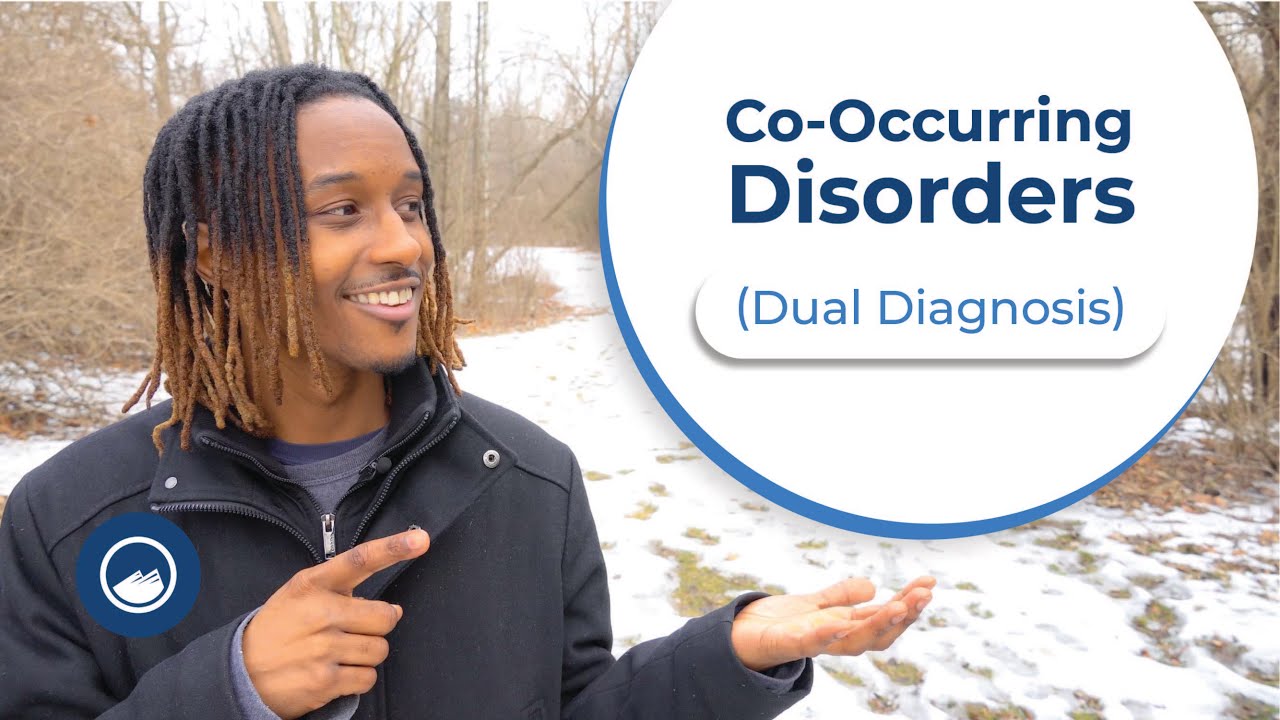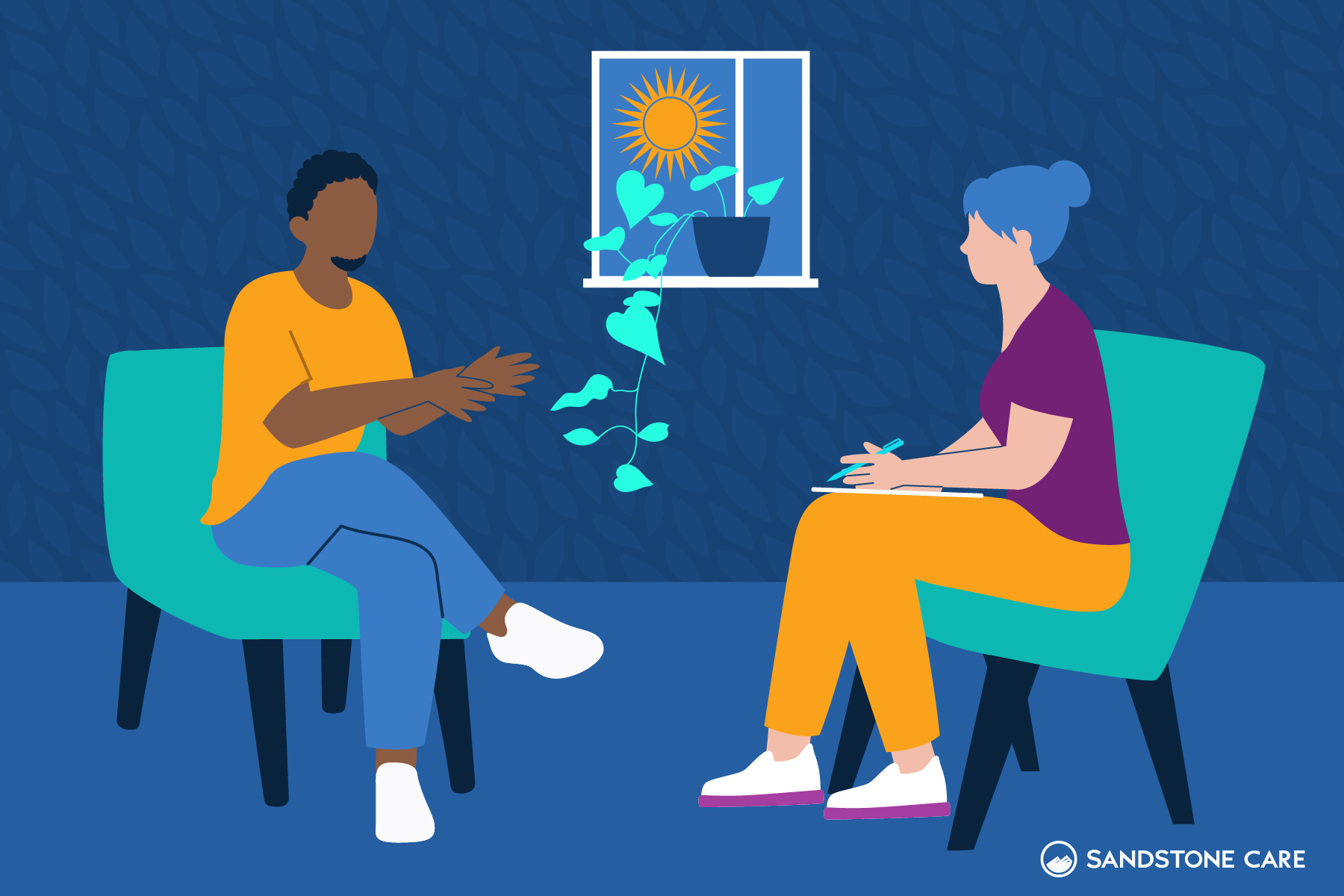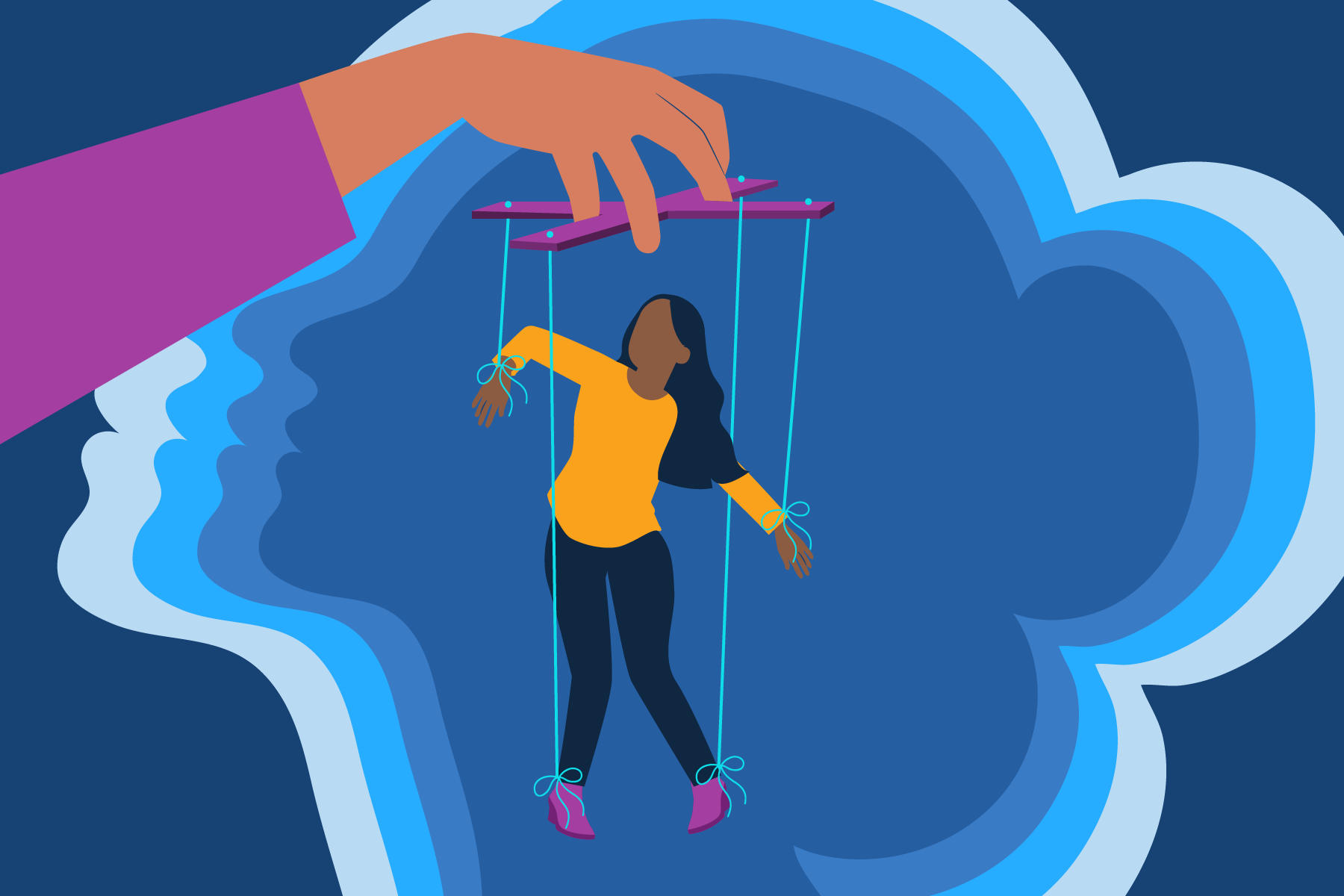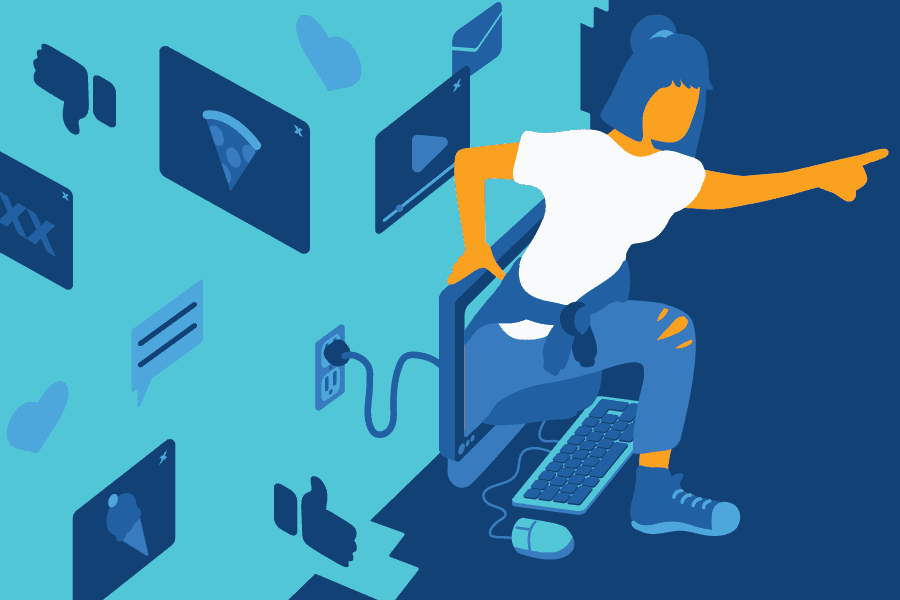Body Dysmorphia Definition
What Is Body Dysmorphic Disorder?
Body dysmorphic disorder (BDD), also referred to as dysmorphophobia, is a psychiatric disorder characterized by a preoccupation with an imagined defect in one’s appearance. If even a small difference in appearance is present, there is an excessive concern.
A teenager with BDD believes they have a flaw that makes them look deformed or ugly even though they look completely normal. Their negative body image and thoughts about their perceived flaw can lead to obsessive behaviors and affect their daily life.
A person of any age can have body dysmorphia. However, it is most common in adolescents and teens.
According to Dialogues in Clinical Neuroscience, the prevalence of BDD in the general population ranges from 0.7% to 2.4%.
Body dysmorphia is a common and severe disorder, yet it is underrecognized and underdiagnosed. If you believe you or a loved one are struggling with body dysmorphic disorder, seek professional help to get a proper diagnosis and treatment.
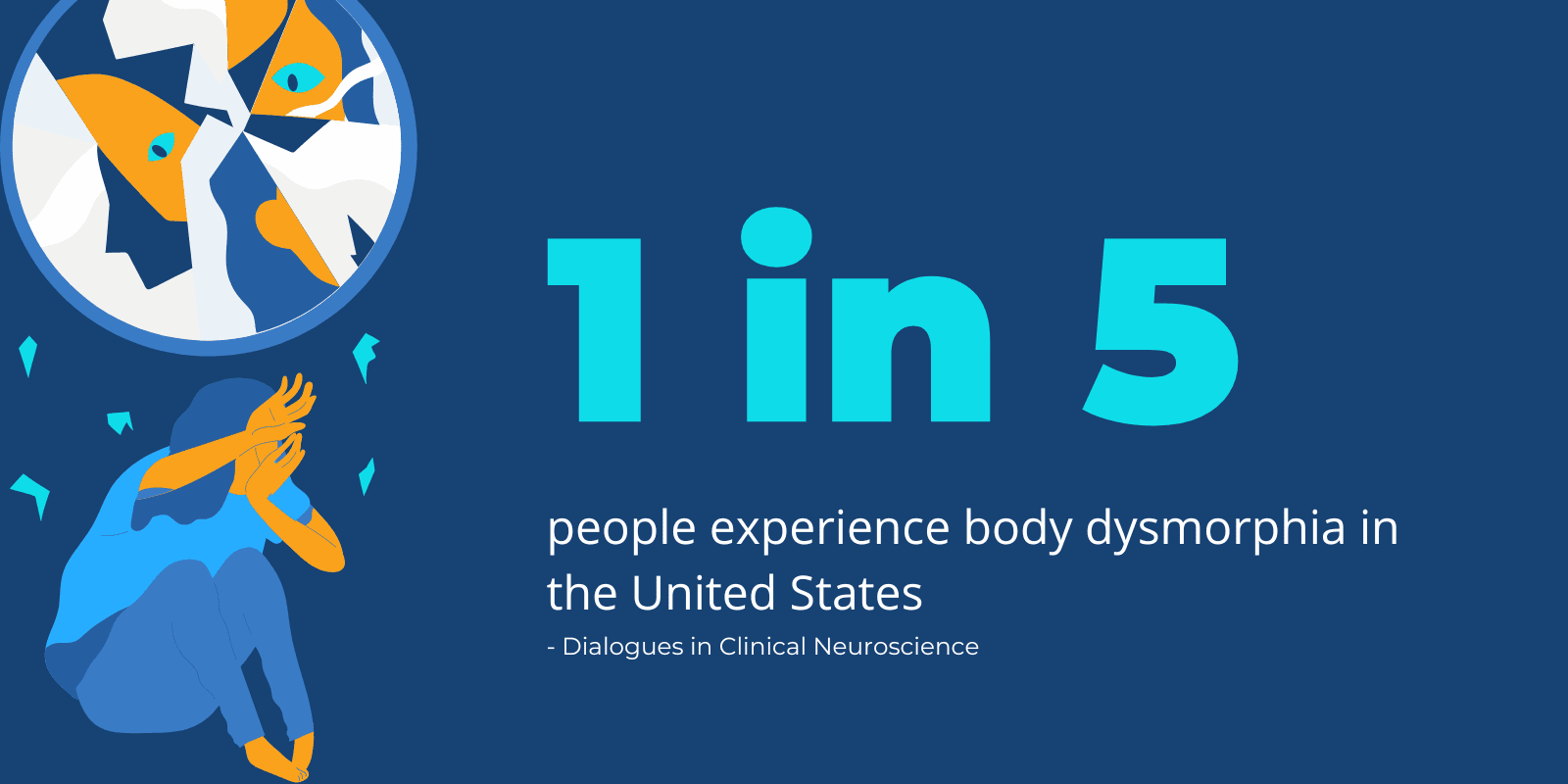
Is BDD A Serious Mental Illness?
Yes, BDD is a severe and common mental illness, yet it is underrecognized and underdiagnosed.
Despite the severity of this mental illness, more research is needed to understand it better and determine the most efficient treatment options.
Who Does Body Dysmorphic Disorder Affect The Most?
BDD can affect anyone but is most common among adolescents and teens.
Studies report that BDD has an approximately equal gender ratio, affecting both men and women equally.
What Does Body Dysmorphia Look Like in Teenagers?
A teen with body dysmorphia believes they are ugly or deformed when they look normal.
Body dysmorphia causes teenagers to feel concerned with the way they look, to the point where it affects their daily life. They may stop going out, socializing, going to school, or even working.
Body dysmorphia can look different from person to person. It can also be hard to tell if someone is struggling with body dysmorphia. They may be coping in silence or isolating themselves to avoid the anxiety and difficult feelings that come along with it.

Causes & Triggers of Body Dysmorphia
What Causes BDD?
The cause of body dysmorphia can depend on a variety of different factors.
One of the most common factors can involve being in an environment that causes a person to feel inadequate or shameful. This could happen when a teen experiences bullying or if a child has parents who are emotionally or physically abusive.
Other factors that can contribute to the development of BDD in teens can include:
- Family history of BDD
- Experiencing traumatic events
- Having certain personality traits that involve low self-esteem
- History of other mental health disorders like anxiety or depression
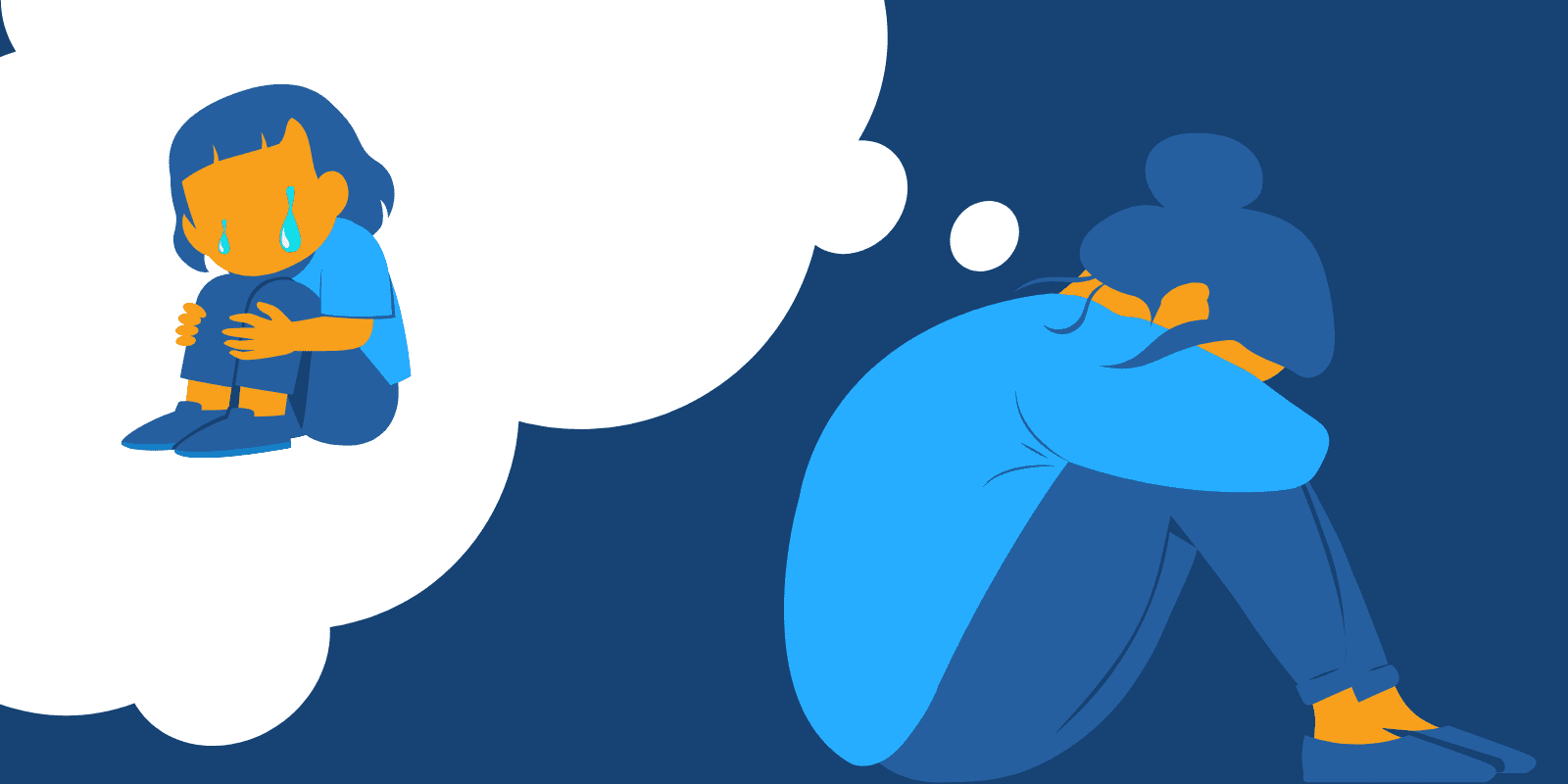
What Triggers Body Dysmorphia?
Triggers for BDD often involve adverse experiences such as bullying or abuse.
Another trigger for body dysmorphia, especially in young people, is social media expectations that create unrealistic standards.
Often, a teen with body dysmorphia compares themselves to others, and constantly seeing edited and unrealistic bodies and faces on social media can further push the inaccurate idea that they are not good enough.
Social media can greatly impact young people’s mental health and well-being. It is important to be aware of these problems and talk about them so that individuals can get help when they need it and learn how to balance their time and build healthy coping skills.
Low-self esteem is also a major contributor to BDD. Low self-esteem can come from a variety of different factors in a person’s life. It can stem from how they are treated, early life experiences, or unrealistic standards.
What Should You Not Say To Someone With Body Dysmorphia?
When someone close to you opens up about body dysmorphia, you may not know how to react or what the best thing is to do.
At the end of the day, you want your loved one to know that you are there for them, they are not alone, that their feelings are valid, and that you want to know how you can help.
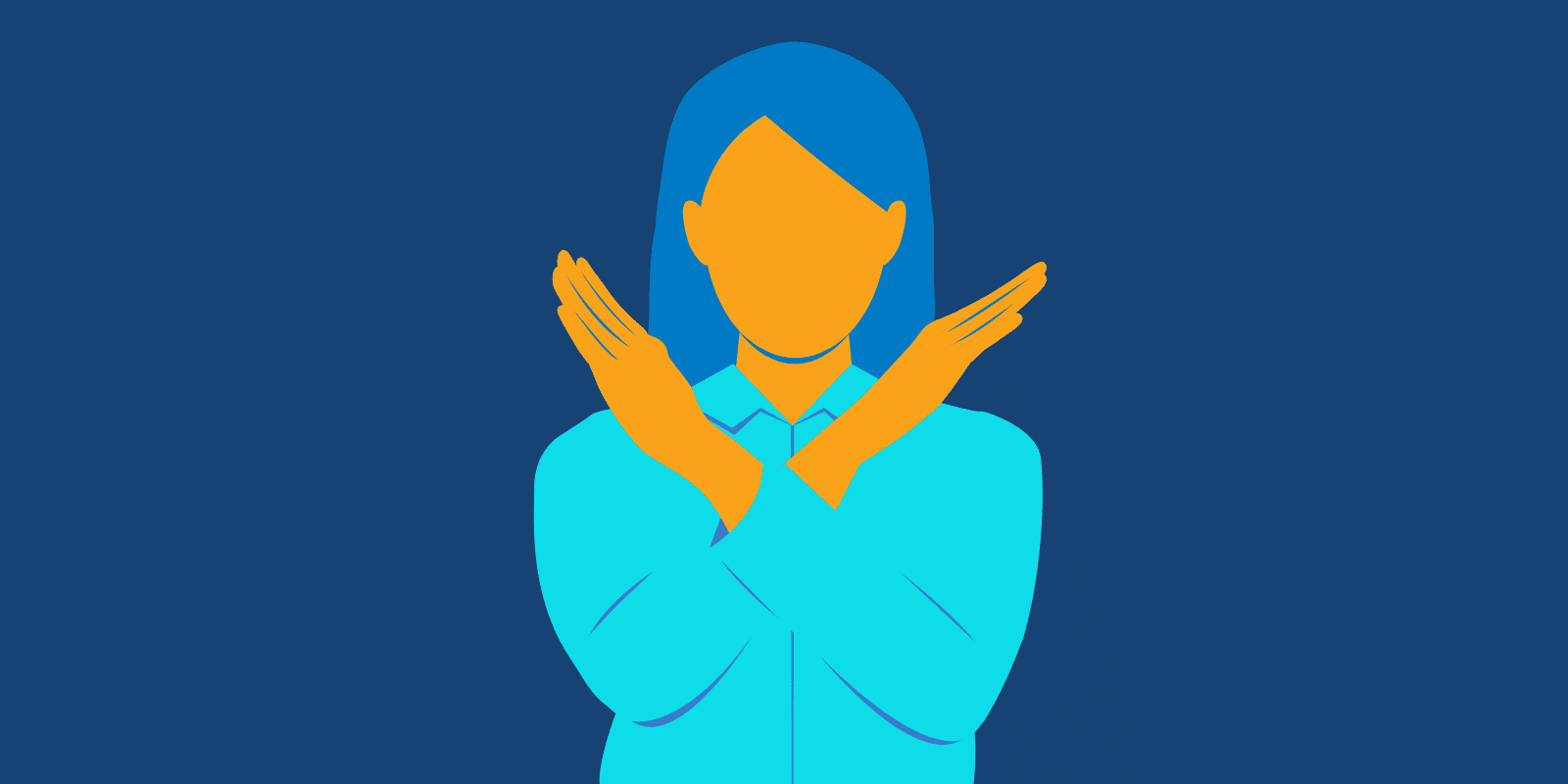
A few things you should not say to someone with body dysmorphia can include:
- “I know how you feel”
This can be dismissive of others’ feelings. Try not to make the conversation about yourself; rather, be honest and figure out how you can help. - “You shouldn’t feel that way” or “Why do you feel that way”
Saying, “you shouldn’t feel that way” or questioning why a person feels the way they do is invalidating their feelings. These phrases can be hurtful. Instead, you can tell a person that you are sorry for what they are going through and that you are there for them. - “It’s all in your head”
To say it is “all in your head” is like telling the person they are making it up, and they can easily change it. It can be extremely frustrating for the person trying to open up to you. Instead, educate yourself on BDD and validate their feelings. - “No, you are so skinny” or “But you’re so gorgeous”
Responding this way when someone voices their concerns can be dismissive and make a person feel that you don’t care or are not taking them seriously.
Rather than commenting like such, you can let them know that their feelings are valid and uplift them in a way that doesn’t focus on their physical appearance.
You can also shift the conversation in a way that communicates you understand that their perceived flaws are symptoms of BDD and figure out ways you can support them.
Body Dysmorphia Symptoms
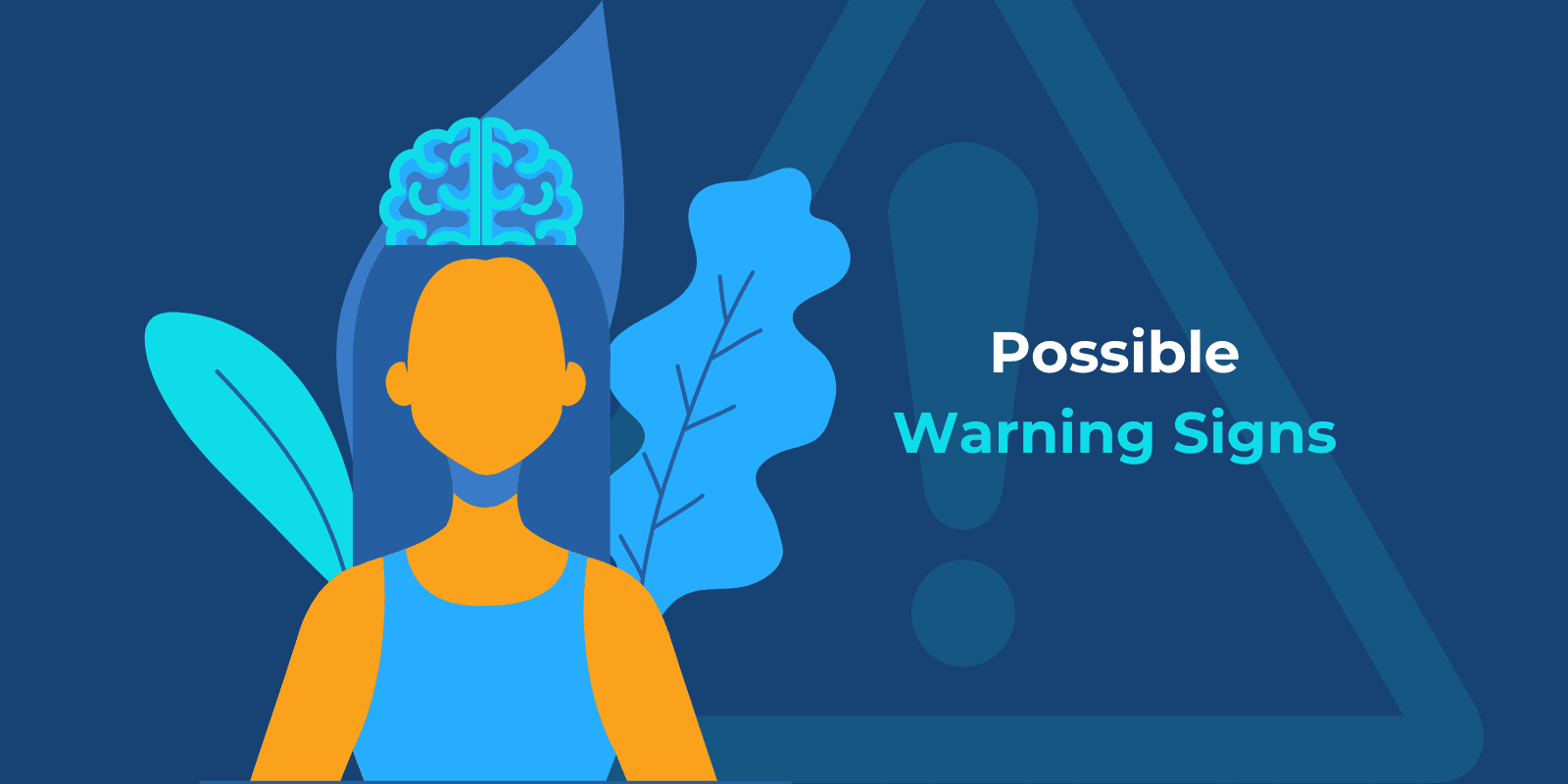
What Are The Five Signs And Symptoms Of Body Dysmorphic Disorder in Teens?
Five of the most common signs and symptoms of BDD can include:
- Being extremely preoccupied with a perceived flaw in appearance
- A belief that your flaw makes you ugly or deformed
- Spending a significant amount of time fixing or hiding a perceived flaw
- Constantly comparing yourself to others
- Frequently seeking reassurance
A teen who has BDD will also often isolate themselves and avoid social situations. They may stop going out, to work, or to school, with a fear of being seen or judged.
Some people may also get numerous cosmetic procedures or plastic surgery done to try to fix their perceived flaws.
What Do People With Body Dysmorphia See?
A teen with body dysmorphia may describe themselves as unattractive, deformed, or ugly; they may even see themselves as a monster.
Often, a person’s concerns are focused around the face, but they can involve any part of the body or multiple body parts.
People with BDD often compare themselves to others and see themselves as inadequate and highly flawed.
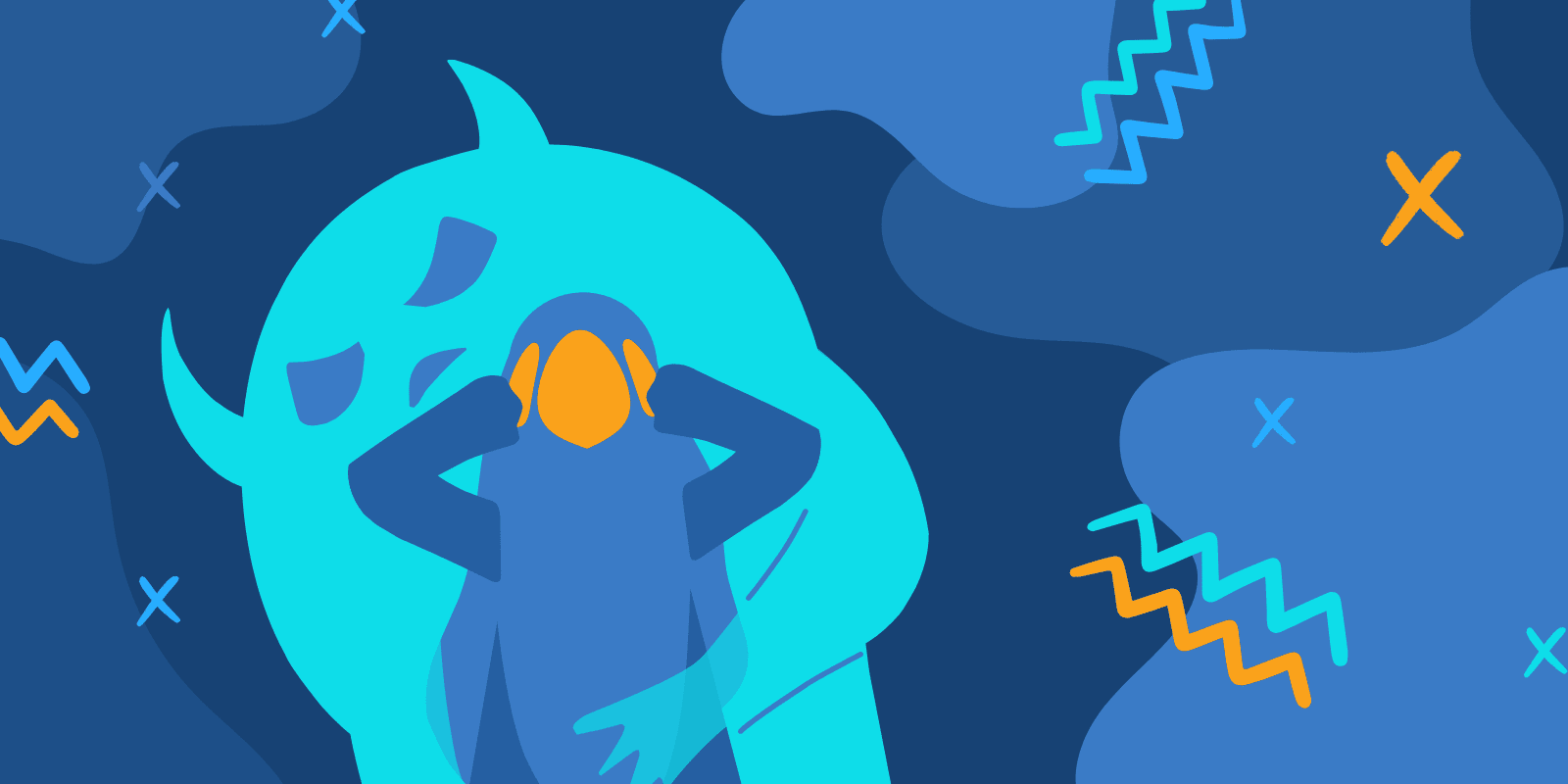
What Is a Body Dysmorphic Disorder Example?
An individual with BDD obsesses over a perceived flaw that is either minimal or does not exist.
For example, an individual with BDD may have a mole or mark that they think makes them look abnormal, ugly, or even terrifying. They may devote a lot of time in their day to covering it up, possibly covering it with makeup or clothes.
Throughout the day, the thought of this flaw causes them great anxiety; it can affect how they are at work, school, or with other people.
They may constantly check the mirror, compare themselves to others, or constantly seek reassurance from the people around them.
In their eyes, they are completely certain that their perceived flaw makes them abnormal. These beliefs are often followed by feelings of low self-esteem, unworthiness, shame, or embarrassment.
What Does Severe Body Dysmorphia Look Like?
A person with severe body dysmorphia is significantly impacted by their perceived flaws and obsessions over them.
Individuals with severe body dysmorphia may see themselves as “hideous” or that they look like a monster.
Their BDD may cause them to quit work, isolate themselves completely, and live in a state of anxiety and depression.
Severe body dysmorphia can deteriorate a person’s mental health. They may engage in self-harming behaviors or experience suicidal thoughts.
If you or a loved one are experiencing suicidal thoughts, you are not alone. Seek help and call 911 or contact the National Suicide Prevention Lifeline at 988.
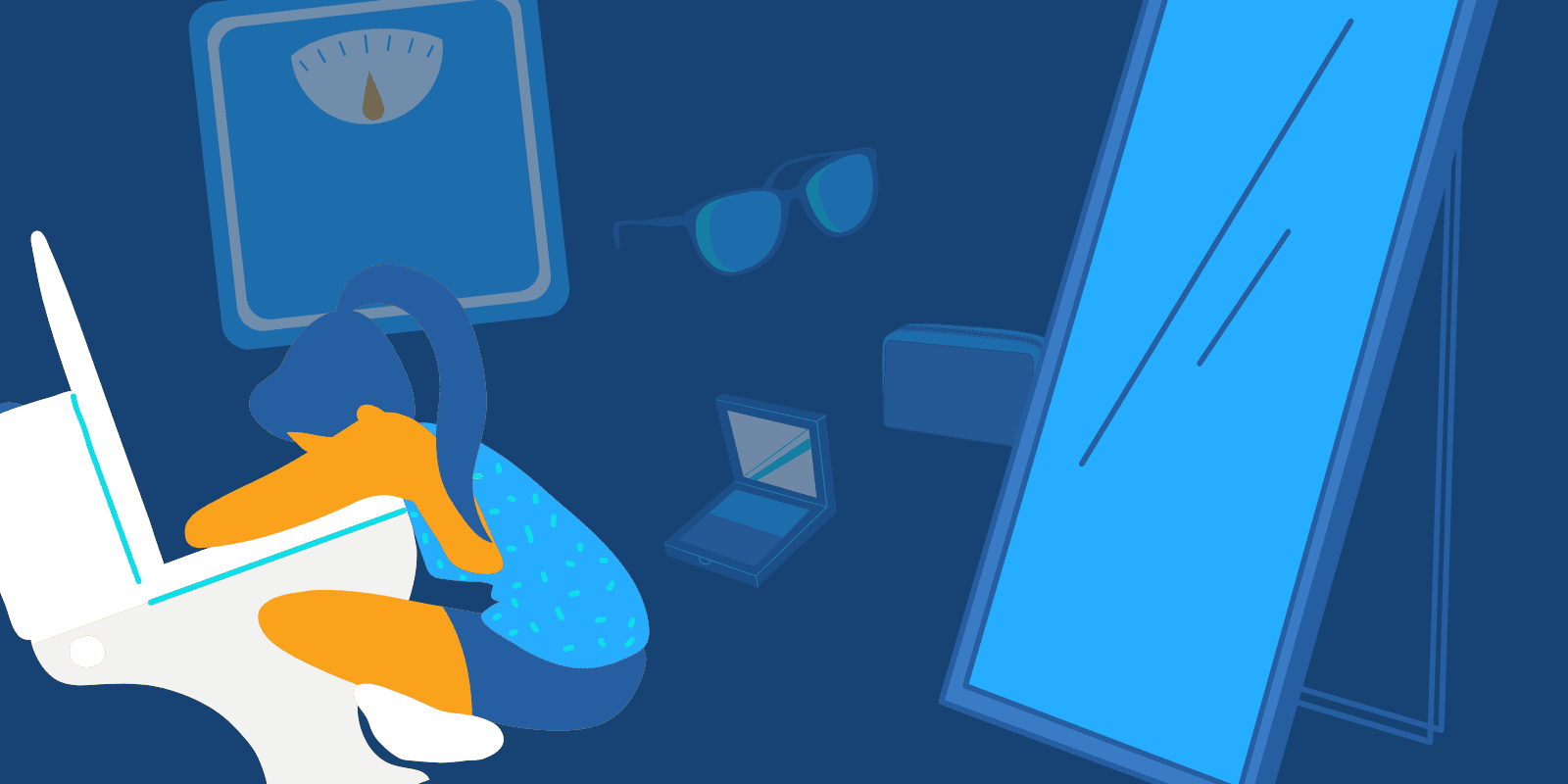
What Is Mild Body Dysmorphia?
A person may have mild body dysmorphia, where they still meet the criteria for a BDD diagnosis, but they may believe they are unattractive as opposed to hideous or monstrous, as in severe BDD.
Individuals with mild BDD may also spend less time in the day preoccupied with their perceived flaws.
Most people with BDD spend at least an hour a day thinking about a specific disliked area, while others spend more or even their entire day.
Do People With BDD See Their Faces Differently?
The Journal of Psychiatric Research explains how individuals diagnosed with BDD may experience abnormal information processing.
Those with BDD may see their face in a negative way or misinterpret it to appear irregular or abnormal.

BDD Diagnosis
How Do You Know If You Have Body Dysmorphia?
Common behaviors associated with body dysmorphia can include:
- Checking the mirror
- Frequently comparing themselves to others
- Excessive grooming
- Camouflaging or trying to cover the “abnormality” up
- Frequently changing clothes
- Seeking reassurance
- Skin picking
- Eating a restricted diet
It is not uncommon for a person to feel insecure about certain features or areas of their body at some point in their life. Teens and young adults, especially, are going through major changes that can impact how they view themselves.
Having body dysmorphia is not the same as experiencing insecurities. BDD is more than that and involves perceived flaws that are obsessed over for significant amounts of time a day and negatively impact a person’s daily life.
How Do You Check For Body Dysmorphia?
According to the DSM-IV criteria, some characteristics that are used to diagnose body dysmorphic disorder include:
- Being very worried about your appearance or being unhappy with how you look
- Spending a lot of time thinking about concerns surrounding their appearance
- Concerns significantly interfere with your life, such as work, school, relationships, etc.
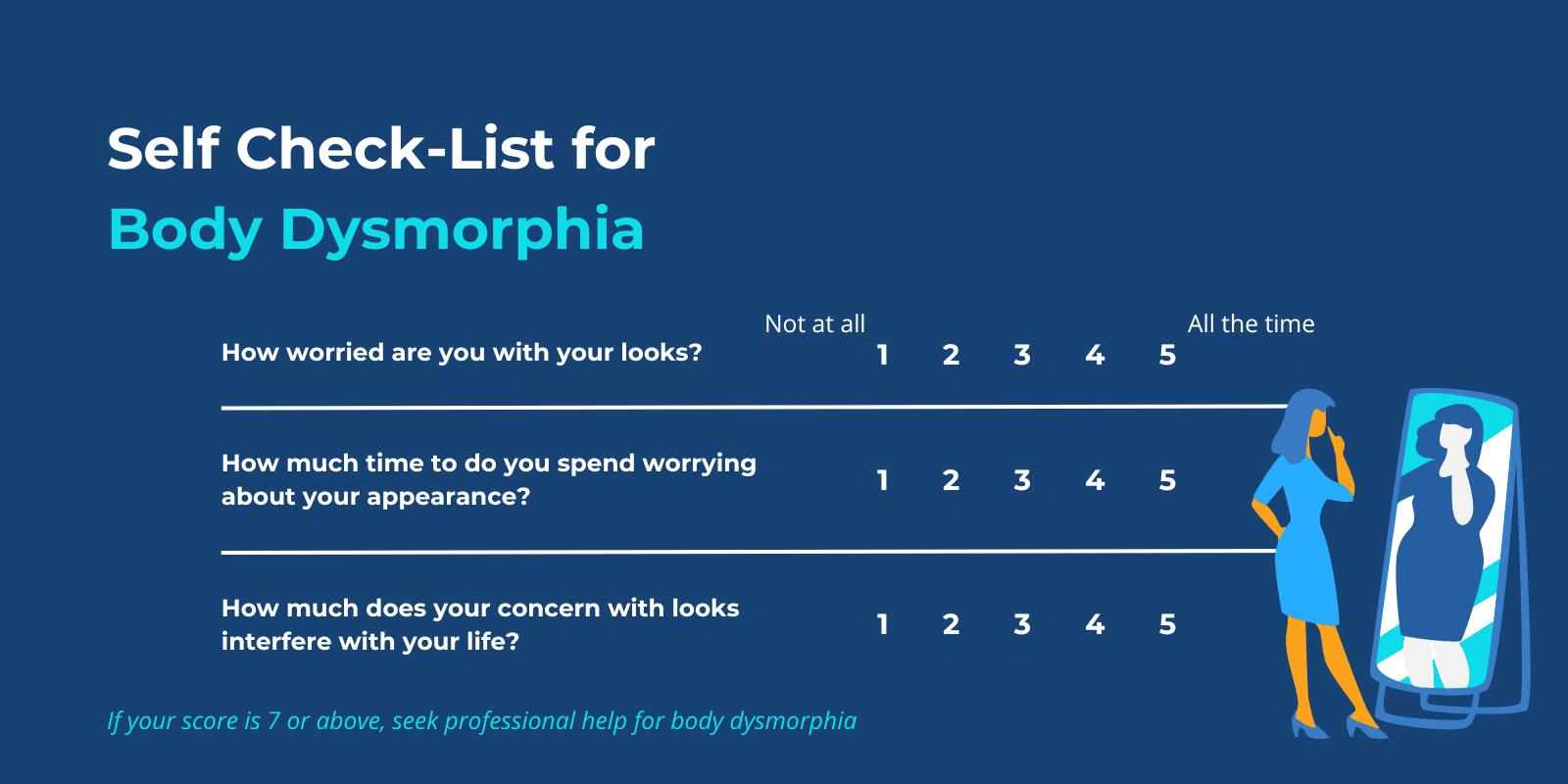
BDD is diagnosed in individuals who:
- Have concerns about a slight or nonexistent flaw
- Are preoccupied with their believed flaws
- Experience distress or impaired functioning because of their concerns
If you or a loved one believe they may have body dysmorphic disorder, it is important to reach out for professional help and contact a healthcare provider to receive a proper diagnosis and treatment.
What Is Having Body Dysmorphia Like?
Struggling with body dysmorphic disorder impacts a person’s daily life.
Body dysmorphia can make it extremely difficult for a person to function daily, as they are preoccupied with certain flaws they believe they have.
It can be harmful to a person’s mental health, making them experience feelings of unworthiness, shame, embarrassment, and ugliness. It affects how they view themselves and can affect their self-worth.
BDD also often comes along with other mental health disorders, especially anxiety and depression.
Having body dysmorphia can make a person feel that they need to fix themselves or hide their perceived flaws. This can make them isolate themselves from others or be in a constant state of worry about their appearance.
It can also be extremely hard for a person to be around others or to go out in public.
How Long Can Body Dysmorphia Last?
According to a study by the American Journal of Psychiatry, the mean duration of BDD was 15.7 years. However, data was limited and obtained retrospectively.
More research is needed to determine the duration of BDD. For some, it can last for years, even before it is diagnosed.
Body Dysmorphic Disorder Treatment
How Is Body Dysmorphia Treated?
According to World Psychiatry, psychotherapy, such as cognitive behavioral therapy (CBT), with elements that include exposure, response prevention, and cognitive restructuring, can help treat BDD.
Selective serotonin reuptake inhibitors (SRIs) are also a medication that can be used as treatment for BDD. However, more research on effective treatment is needed.
The most effective treatment completely depends on the individual. It is important to find a treatment program that works best for your needs.
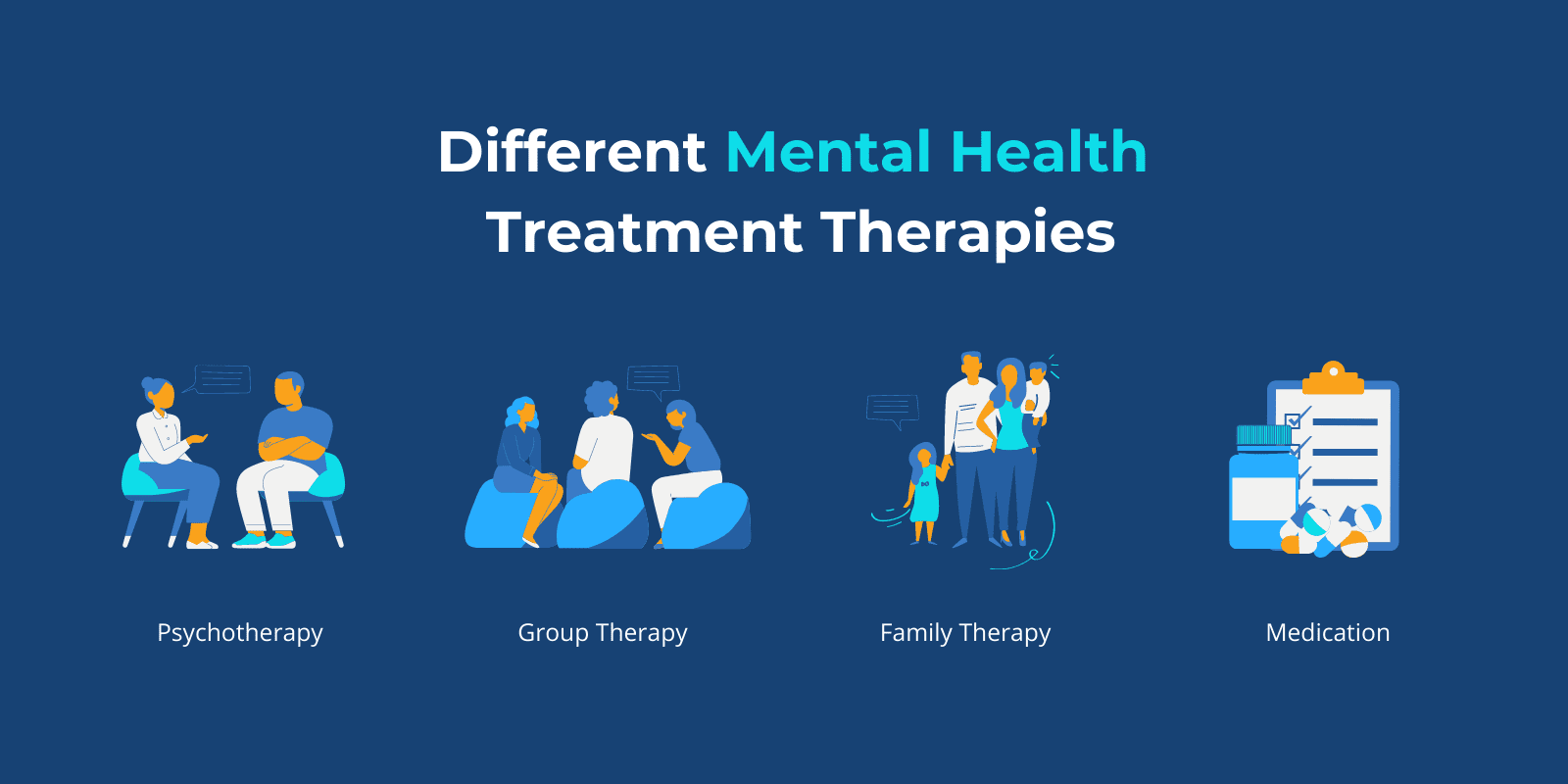
Does Body Dysmorphia Ever Go Away?
Body dysmorphia typically doesn’t go away on its own without treatment.
If untreated, BDD can lead to worsened mental health conditions, including anxiety, major depression, and in some cases, suicidal thoughts or self-harming behaviors.
If you or a loved one are struggling with suicidal thoughts, call 911 or the National Suicide Prevention Lifeline at 988.
Can You Treat Body Dysmorphia By Yourself?
Without proper treatment, symptoms of body dysmorphia can worsen over time.
However, there are ways for a person to manage BDD at home and in their everyday lives.
Certain things may help, such as:
- Taking care of your health (getting sleep, eating a balanced diet, engaging in physical activity, spending time outside, avoiding drug and alcohol use)
- Build your self-esteem (celebrate your small and big wins, accept compliments, write down qualities that you like about yourself)
- Use self-help resources (books, videos, podcasts, journaling)
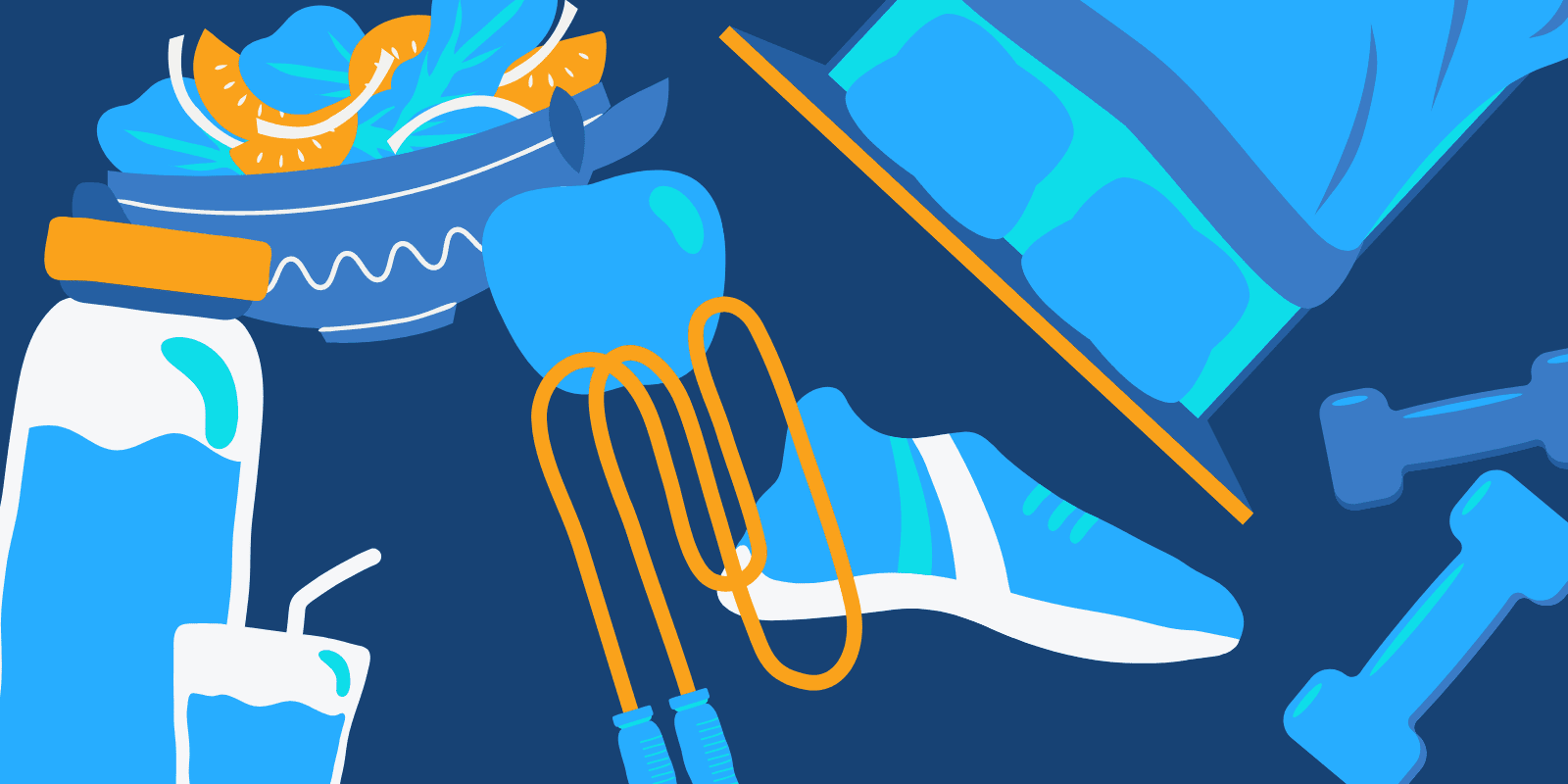
FAQ
You have questions. We have answers.
Our goal is to provide the most helpful information. Please reach out to us if you have any additional questions. We are here to help in any way we can.
Body dysmorphia usually begins in the early adolescent years and can occur in childhood.
However, body dysmorphia can affect a person of any age.
If a teenager has BDD and it is left untreated, their body dysmorphia can worsen over time.
According to Depression and Anxiety, BDD has been proposed to be categorized as an obsessive-compulsive disorder, or OCD-spectrum disorder. However, more research is needed to compare the two disorders.
Body dysmorphic disorder is commonly misdiagnosed as OCD because they are both characterized by obsessions and compulsive behaviors.
According to Clinical Psychology Review, the concern surrounding physical appearance that comes with BDD is likely associated with a fear of negative evaluation by others, which can link BDD with social anxiety disorder (SAD).
It can be said that social anxiety disorder and BDD share multiple similar characteristics and are highly comorbid.
Certain studies have found BDD to be a subtype of SAD. However, more research is needed to determine their relationship.
The DSM-IV classifies BDD as a somatoform disorder.
A somatoform disorder, or somatic symptom disorder, occurs when an individual experiences extreme anxiety about physical symptoms, according to MedlinePlus.
However, there is a form of BDD known as delusional BDD, which is a psychotic disorder.
The signs and symptoms of body dysmorphia can depend on each individual. Some may focus on one single minor flaw, while others may be concerned about different parts of their body.
Three symptoms of body dysmorphia can include:
- The preoccupation with perceived flaws that are not seen by others
- Engaging in repetitive behaviors to try to cover or hide the perceived flaw
- Feeling anxious around other people or about going to public
People with BDD may also have other disorders, such as anxiety, depression, OCD, and eating disorders. It is important to receive a proper diagnosis to address and treat each condition.
According to the Journal of Athletic Training, bigorexia, or muscle dysmorphia, focuses on how large or muscular a person can get.
Bigorexia is a form of OCD and is subcategorized as a body dysmorphic disorder.
Muscle dysmorphia can affect any person but is more common in males than females.
This condition is also referred to as reverse anorexia.


